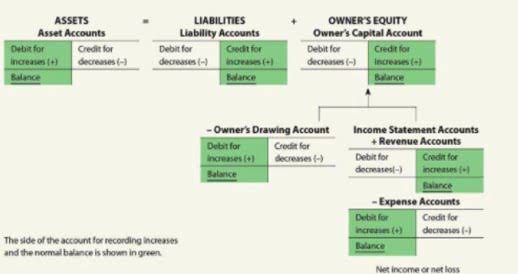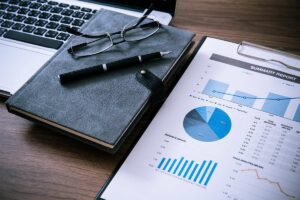
Sara wants to know the amounts of depreciation expense and asset value she needs to show in her financial statements prepared on 31 December each year if the double-declining method is used. The following section explains the step-by-step process for calculating the depreciation expense in the first year, mid-years, and the asset’s final year. Unlike the straight-line method, the double-declining method depreciates a higher portion of the asset’s cost in the early years and reduces the amount of Insurance Accounting expense charged in later years. The next step is to calculate the straight-line depreciation expense, which is equal to the difference between the PP&E purchase price and salvage value (i.e. the depreciable base) divided by the useful life assumption. Nevertheless, businesses should carefully evaluate their specific circumstances and asset types when choosing a depreciation method to ensure that it aligns with their financial objectives and regulatory requirements.
- Yes, it is possible to switch from the Double Declining Balance Method to another depreciation method, but there are specific considerations to keep in mind.
- After the final year of an asset’s life, no depreciation is charged even if the asset remains unsold unless the estimated useful life is revised.
- These financial relationships support our content but do not dictate our recommendations.
- Accelerated depreciation is any method of depreciation used for accounting or income tax purposes that allows greater depreciation expenses in the early years of the life of an asset.
- Firms depreciate assets on their financial statements and for tax purposes in order to better match an asset’s productivity in use to its costs of operation over time.
Preventive Maintenance Software for Reliable eCommerce Operations

But as time goes by, the fixed asset may experience problems due to wear and tear, which would result in repairs and maintenance costs. That’s why depreciation expense is lower in the later years because of the fixed asset’s decreased efficiency and high maintenance cost. FitBuilders estimates that the residual or salvage value at the end of the fixed asset’s life is $1,250. Since we already have an ending book value, let’s squeeze in the 2026 depreciation expense by deducting $1,250 from $1,620. To calculate the depreciation expense of subsequent periods, we need to apply the depreciation rate to the laptop’s carrying value at the start of each accounting period of its life. Depreciation rates used in the declining balance method could be 150%, 200% (double), or 250% of the straight-line rate.

Final Year Depreciation

Depreciation is a fundamental concept in accounting, representing the allocation of an asset’s cost over its useful life. Various depreciation methods are available to businesses, each with its own advantages and drawbacks. One such method is the Double Declining Balance Method, an accelerated depreciation technique that allows for a more significant portion of an asset’s cost to be expensed in the earlier years of its life. The double-declining balance (DDB) depreciation method, also known as the reducing balance method, is one of two common methods a business uses to account for the expense of a long-lived asset. Compared to the standard declining balance method, the double-declining method depreciates assets twice as quickly.
Why Is Double Declining Depreciation an Accelerated Method?
In that case, we will charge depreciation only for the time the asset was still in use (partial year). Like in the first year calculation, we will use a time factor for the number of months the asset was in use but multiply it by its carrying value at the start of the period instead of its cost. If, for example, an asset is purchased on 1 December and the financial statements are prepared on 31 December, the depreciation CARES Act expense should only be charged for one month. Under the generally accepted accounting principles (GAAP) for public companies, expenses are recorded in the same period as the revenue that is earned as a result of those expenses.
Double Declining Balance Method (DDB)

When it comes to taxes, this approach can help your business reduce its tax liability during the crucial early years of asset ownership. With the right accounting tool to help you streamline tasks and ensure accuracy, you can create efficient accounting practices that optimize tax strategies, enhance financial reporting and promote your business’s success. The MACRS method for short-lived assets uses the double declining balance method but shifts to the straight line (S/L) method once S/L depreciation is higher than DDB depreciation for the remaining life. Aside from DDB, sum-of-the-years digits and MACRS are other examples of accelerated depreciation methods. They also report higher depreciation in earlier years and lower depreciation in later years.
The company estimates that its useful life will be five years and its salvage value at the end of its useful life would be $1,250. For example, if an asset has a salvage value of $8000 and is valued in the books at $10,000 at the start of its last accounting year. In the final year, the asset will be further depreciated by $2000, ignoring the rate of depreciation. We can incorporate this adjustment using the time factor, which is the number of months the asset is available in an accounting period divided by 12. This is because, unlike the straight-line method, the depreciation expense under the double-declining method is not charged evenly over the asset’s useful life. However, note that eventually, we must switch from using the double declining method of depreciation in order for the salvage value assumption to be met.
Company
However, if the company later goes on to sell that asset for more than its value on the company’s books, it must pay taxes on the difference as a capital gain. DDB depreciation is less advantageous when a business owner wants to spread out the tax benefits of depreciation over a product’s useful life. This is preferable for businesses that may not be profitable yet and, therefore, may be unable to capitalize on greater depreciation write-offs or businesses that turn equipment assets over quickly. What it paid to acquire the asset — to some ultimate salvage value over a set period of years (considered the useful life of the asset). By reducing the value of that asset on the company’s books, a business can claim tax deductions each year for the presumed lost value of the asset over that year.
Understanding the pros and cons of the Double Declining Balance Method is vital for effective financial management and reporting. The Units of Output Method links depreciation to the actual usage of the asset. It is particularly suitable double declining balance method for assets whose usage varies significantly from year to year. This approach ensures that depreciation expense is directly tied to an asset’s production or usage levels.
